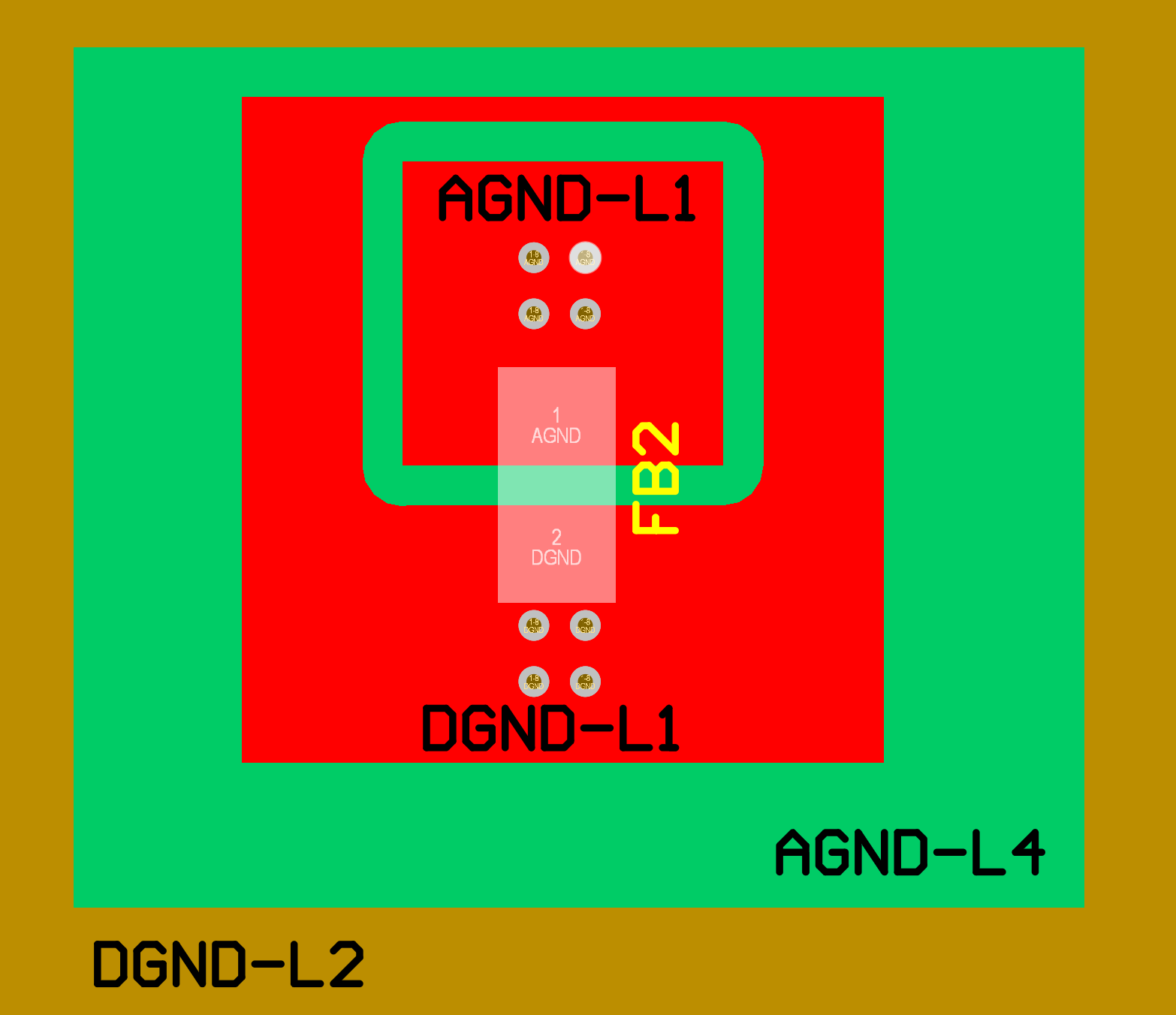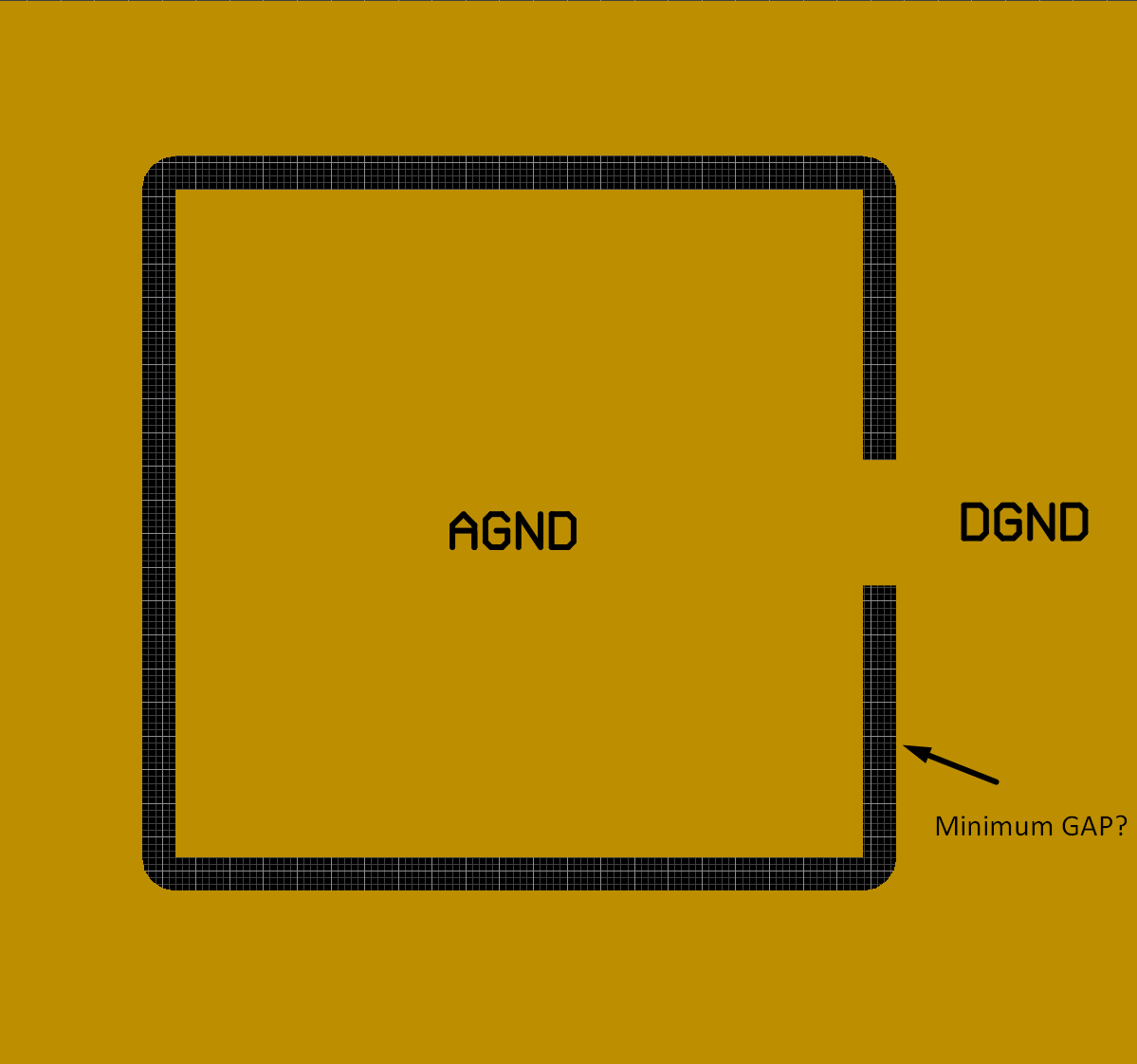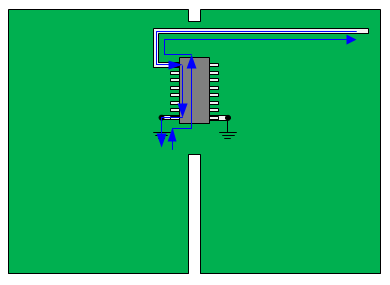Hi TI experts,
My board uses several components that use analog ground, among them are the processor, LDO, PLL, temperature and humidity sensor and other components associated with the analog part. I cannot use the typical Starburst-type routing (although in theory option #2 is it, but in a non-standard view/placement), since the location of the components and the available space for wiring do not allow this. I also cannot use two full selected separate planes and connect them with through-hole, as this will increase the number of layers of my board, which in turn will harm the economic component. I highlight two options for myself at the moment and ask for your advice on which one is recommended from the point of view of TI for better performance of EMI/EMC?
Available options:
1. Use a ferrite bead between AGND and DGND polygons. (agnd-dgnd-fb.png)
Description:
AGND-L1 is used only for AGND-L4 (AGND main plane - components are connected via vias) connection with DGND-L2 (DGND main plane)
2. Make an AGND polygon with insulation (on the main DGND ground plane) and connect it to the main polygon with a small section of copper. (agnd-dgnd.png)
Description:
Both AGND and DGND polygons are on the same inner layer L2. AGND is placed in the center of this layer, surrounded by DGND, due to the fact that the element can not be placed differently due to the overall layout of the board.
Additional Information:
The board uses one input operating voltage coming from the power supply in the form of VCC (12V) and GND, subsequently located on layers L2 (GND) and L7 (VCC).
Question about options:
a. Which option is better in terms of EMI / EMC?
b. Does AVCC require the installation of a ferrite bead at the input, when connected to a VCC digital power supply?
c. Should analog signals pass exclusively over analog ground? Does this apply only to signals or to analog power supply as well? Or is the only requirement that there should be no discontinuities in the plane over which they pass?
d. In the case of option #1, the installation of two components is required? Input FB1 and output FB2? Or is one FB2 (output filter) enough to filter GND return currents?
- FB1 - at the power input VCC => AVCC
- FB2 - at the AGND => DGND
e. What should be the size of the minimum gap between AGND and DGND? (for voltage below 12V)
f. Is it necessary to connect capacitors providing capacitance / bypass for AVCC to AGND or can they be connected to DGND? Does it matter?
g. Does option #2 apply to ground current loops? Explanation: the digital ground surrounds the analog, will it affect it with sufficient isolation?
h. What affects each other more? (in terms of EMI) Digital signals to analog or analog to digital?
i. Can planes overlap each other if analog and digital ground are placed on different layers? What is it fraught with?





